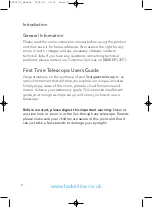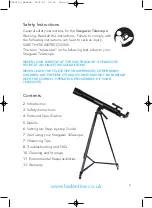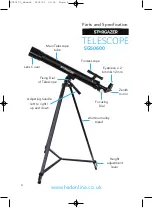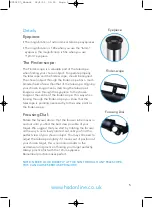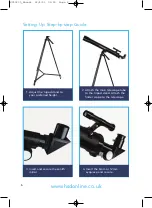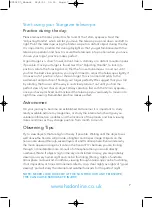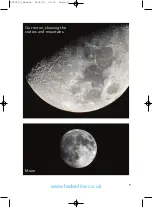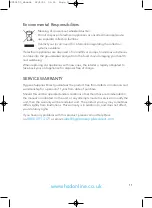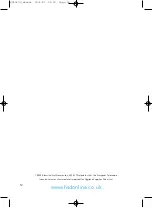
www.hsdonline.co.uk
7
Start using your Stargazer telescope
Practice during the day:
Please remove the lens protectors first and fit the 12mm eyepiece. Twist the
"Adjusting Handle" which will let you move the telescope up and down and left to
right. Point the telescope using the finder-scope to a distant object during the day.
It is important to practice this during daylight so that you get familiarised with the
telescope operation and how to secure the telescope into position when you have
chosen your target, practice makes perfect .
A good target is a church tower, distant tree, a chimney or a distant mountain peak
if possible. Once your target is found twist the "Adjusting Handle" to lock into
position, rotate the focusing dial so that the focuser tube moves in and out until
you find the best view possible, you may still need to adjust the telescope slightly if
it moves out of position of your chosen target, this is normal and adds to the
excitement and practice of finding your target perfectly. We suggest that you start
by rotating the focuser all the way in and slowly rotate it out until you find the
perfect view of your chosen object. Always practice first with the 12mm eyepiece,
once you have practiced and mastered the telescope you are ready to move onto
night time viewing. Remember practice makes perfect.
Astronomer:
On your journey to become an established Astronomer it is important to study
ready available astronomy magazines, or study the internet which will give you
valuable information, updates and the locations of the planets and best viewing
dates and times as they change position from month to month.
Observing Tips:
Try to view objects that are high in the sky if possible. Waiting until the object rises
well above the horizon will provide a brighter and crisper image. Objects on the
horizon are viewed through several layers of earth’s atmosphere. Ever wonder why
the moon appears orange as it sets on the horizon? It’s because you are looking
through a considerable more amount of atmosphere than you would directly
overhead. (Note: If objects high in the sky are distorted or wavy, you are probably
viewing on a very humid night and can be frustrating.) During nights of unstable
atmosphere and overcast conditions, viewing through a telescope can be frustrating,
if not impossible, at times. Astronomers refer to crisp, clear nights as nights of "good
viewing" and will study the internet and weather forecasts for the perfect night.
NOTE: NEVER LOOK DIRECTLY AT THE SUN THROUGH ANY TELESCOPE;
THIS CAN CAUSE SERIOUS EYE INJURY.
SG50600_Manual 26/4/21 09:59 Page 7


